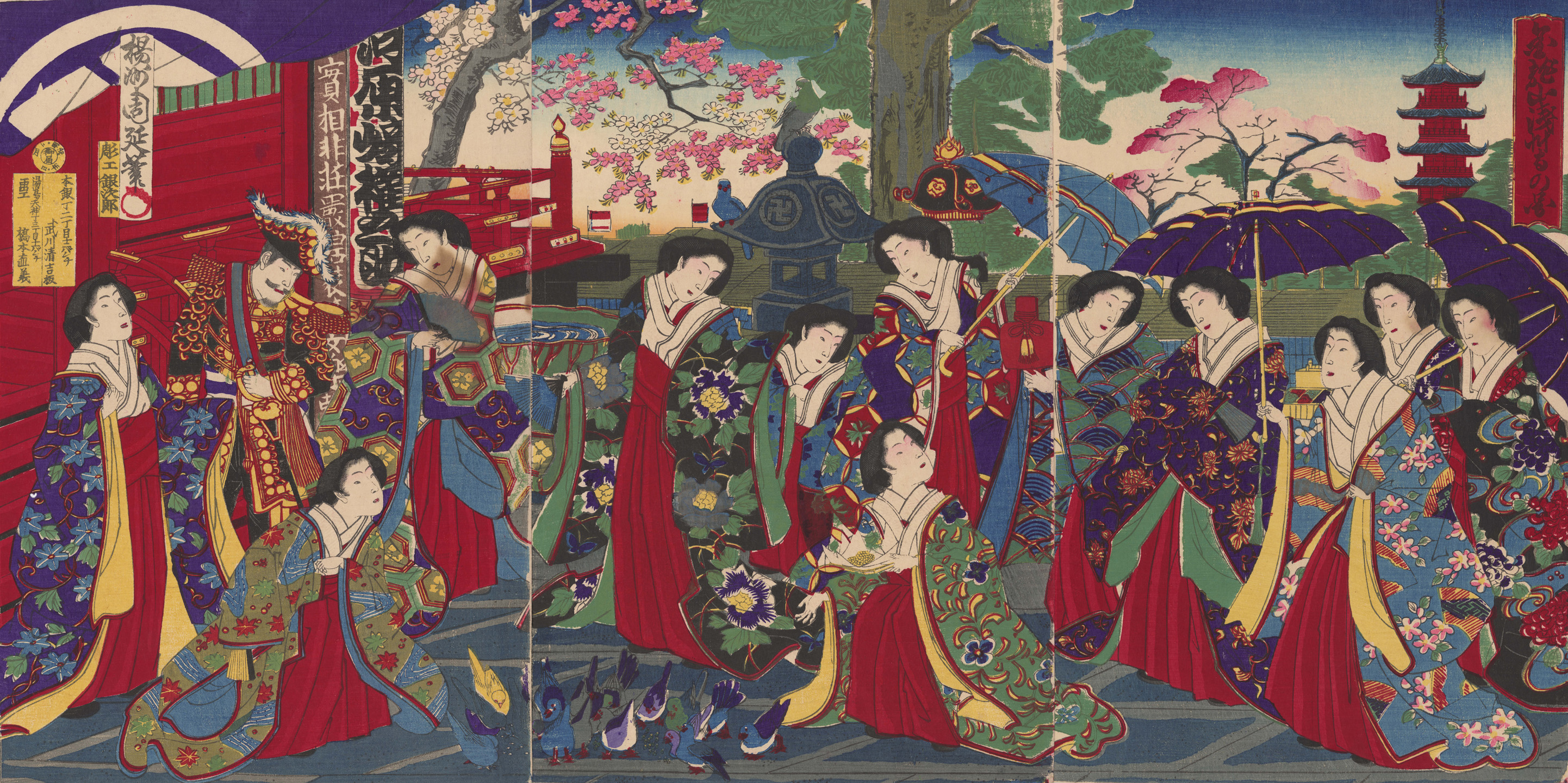
Events
The Fanning the Flames Speaker Series highlights conversations with leading scholars of modern East Asian history, art, and propaganda and is presented in conjunction with the launch of the book, website, and physical exhibition.
Upcoming Events
Past Events
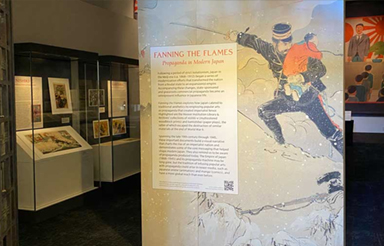
A Virtual Exhibition Tour of Fanning the Flames: Propaganda in Modern Japan
The event will feature a video screening of “A Virtual Exhibition Tour of Fanning the Flames: Propaganda in Modern Japan.” For the first time we will reveal to our virtual audience a view of the physical exhibition, located in the Lou Henry Hoover gallery at Hoover Tower, Stanford University. Dr. Ueda will also be joined by Library & Archives colleagues to talk about the processes involved with developing exhibitions like Fanning the Flames.

Curator of the Japanese Diaspora Collection at the Hoover Institution Library & Archives

Kaoru (Kay) Ueda is the curator of the Japanese Diaspora Collection at the Hoover Institution Library & Archives. She curated many of the materials used in Fanning the Flames: Propaganda in Modern Japan (Hoover Institution Press, 2021) and forthcoming exhibition. Ueda manages the Japanese Diaspora Initiative, endowed by an anonymous gift to promote the study of overseas Japanese history during the Empire of Japan period. She is also the editor of On a Collision Course: The Dawn of Japanese Migration in the Nineteenth Century (Hoover Institution Press, 2020).
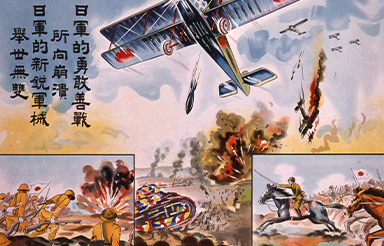
Tradition Repurposed: New Year’s Pictures, Cartoons and Political Posters around the Second Sino-Japanese War
05.19. 2022Tradition Repurposed: New Year’s Pictures, Cartoons and Political Posters around the Second Sino-Japanese War
Historically, Sino-Japanese cultural exchanges were dominated by a China-oriented mentality. This relationship shifted abruptly in the late nineteenth century with Japan’s rapid westernization and industrialization, which coincided with the cultural and political implosion of the Qing Dynasty, and was further inverted as Japan became a world power and China struggled to reassemble itself. It was thus with a sense of justification that the Japanese advertised themselves as the legitimate protector of East Asian culture, and key Chinese cities under their occupation became a battleground for what Japan called the New Order in East Asia. The influence of Japanese aesthetics on Chinese art had also become increasingly noticeable by the end of the Nineteenth century. However, not until around the Second Sino-Japanese War did the Chinese political and military agencies start paying attention to the effectiveness of Japanese visual propaganda strategies in China, especially to the exceptional Japanese skill at adopting traditional Chinese folk motifs. This lecture examines the subsequent war of propaganda prints between the Guomindang and the Japanese militarists during the 1930s and 1940s. Speaker: Dr. Shaoqian Zhang | Moderator: Professor Alice Y. Tseng
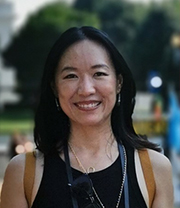
Associate Professor of Art History at Oklahoma State University
Read more
Dr. Shaoqian Zhang, is an associate professor of art history at Oklahoma State University. She received her BA in traditional Chinese architecture from Beijing University and MA and Ph.D. in art history from Northwestern University. Professor Zhang’s research touches upon a wide variety of visual materials ranging from traditional East Asian architecture to modern and contemporary art in China. She has published a number of articles that reflect her interests in print culture, military history, medium specificity, and spectatorship in China’s modern period, appearing in journals such as Modern Art Asia, Transcultural Studies, Twentieth-Century China, Dao: A Journal of Comparative Philosophy and em>Art in Print. She is the author of “Political Art and Posters” in Oxford Bibliographies of Chinese Studies. Professor Zhang received the 2017 Oklahoma State University College of Arts and Sciences Junior Faculty Award for Scholarly Excellence.

Alice Y. Tseng is the department chair of History of Art and Architecture at Boston University.
Read more
Alice Y. Tseng is the department chair of History of Art and Architecture at Boston University. Her research focuses on Japan from the nineteenth century to the present, especially the history of cities, buildings, and the visual arts in response to exchanges with Europe and the United States. Other areas of interest are histories of collections and exhibitions, and the visual and spatial representations of Japan’s modern monarchy. Tseng is the author of The Imperial Museums of Meiji Japan: Architecture and the Art of the Nation (Seattle: University of Washington Press, 2008), Kyoto Visual Culture in the Early Edo and Meiji Periods: The Arts of Reinvention, coedited with M. Pitelka (Abingdon, UK: Routledge, 2016), and Modern Kyoto: Building for Ceremony and Commemoration, 1868–1940 (Honolulu: University of Hawai‘i Press, 2018). Her research has appeared in major disciplinary journals, including the Journal of the Society of Architectural Historians, the Art Bulletin, the Review of Japanese Culture and Society, and the Journal of Japanese Studies.
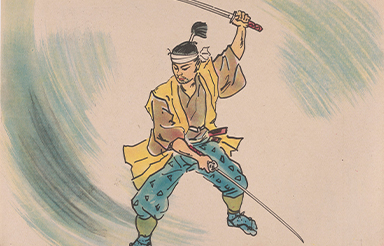
“Bushidō” & What “Bushi” Did: Loyalty, Reputation & Honor in the Samurai Tradition
04.12. 2022“Bushidō” & What “Bushi” Did: Loyalty, Reputation & Honor in the Samurai Tradition
The samurai is an entertaining, romantic figure and for many in and out of Japan, a fundamental representative, a symbol, of Japanese national character. And yet the majority of what samurai aficionados—and a great many scholars as well—believe about samurai culture derives from a consciously-fashioned mythology that bear scant resemblance to historical reality. Indeed, to describe samurai culture in historical reality, we must first ask “which samurai historical reality?” For while modern commentators have too often attempted to treat “bushidō” (literally, “the way of the warrior”) as an enduring code of behavior readily encapsulated in simplistic notions of honor, duty, and loyalty, the historical reality is far from simple. Warrior values and behavior varied significantly from era to era—most especially across the transition from the medieval to the early modern age—and in most cases bore scant resemblance to twentieth-century fantasies about samurai comportment. This lecture will examine the evolution of the warrior ethos in Japan, with special attention to the key constructs of honor and loyalty. Speaker: Karl Friday | Moderator: Kaoru (Kay) Ueda

Professor Emeritus at Saitama University and University of Georgia
Read more
Karl F. Friday (PhD, Stanford 1989) is Professor Emeritus at the University of Georgia and in the Graduate School of Humanities and Social Sciences at Saitama University. A specialist in the Heian and Kamakura periods, his publications include Hired Swords: The Rise of Private Warrior Power in Early Japan (Stanford, 1992), Legacies of the Sword: the Kashima Shinryu & Samurai Martial Culture (University of Hawai’I Press, 1997), Samurai, Warfare and the State in Early Medieval Japan (Routledge, 2004), The First Samurai: the Life & Legend of the Warrior Rebel Taira Masakado (Wiley, 2008), Japan Emerging: Premodern History to 1850 (Westview, 2012), The Routledge Handbook of Premodern Japanese History (Routledge, 2017) and numerous shorter works.

Curator of the Japanese Diaspora Collection at the Hoover Institution Library & Archives

Kaoru (Kay) Ueda is the curator of the Japanese Diaspora Collection at the Hoover Institution Library & Archives. She curated many of the materials used in Fanning the Flames: Propaganda in Modern Japan (Hoover Institution Press, 2021) and forthcoming exhibition. Ueda manages the Japanese Diaspora Initiative, endowed by an anonymous gift to promote the study of overseas Japanese history during the Empire of Japan period. She is also the editor of On a Collision Course: The Dawn of Japanese Migration in the Nineteenth Century (Hoover Institution Press, 2020).
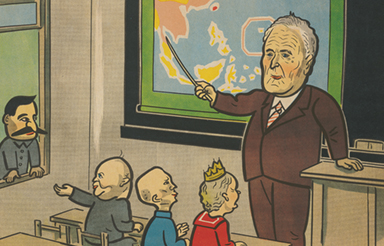
Two Tales of Kamishibai: in Occupied Japan and Japanese-Occupied Territories
03.10. 2022Two Tales of Kamishibai: in Occupied Japan and Japanese-Occupied Territories
This presentation explores the success of kamishibai (paper plays) as a propaganda tool in the Japanese archipelago and its failure in the Japanese colonies and occupied territories. The reasoning for this resonated with the bewilderment of the Allied powers when they attempted direct control over Japanese media during the occupation period. Kamishibai, a uniquely Japanese performing art, was beyond their comprehension or control, even as they hastily set up a kamishibai post to handle this enigmatic medium. However, outside Japan, most of the kamishibai propaganda operations in the Japanese occupied territories and colonies did not deliver satisfactory results to the Japanese local authorities. The exception was Indonesia, where local Indonesian performers and artists contributed to the popularity of kamishibai. Speaker: Taketoshi Yamamoto. Moderator: Sharalyn Orbaugh.

Professor emeritus in Japanese history at Waseda University and the founder of the Institute of Intelligence Studies, Japan.
Read more
Taketoshi Yamamoto is a professor emeritus in Japanese history at Waseda University and the founder of the Institute of Intelligence Studies, Japan. He has published extensively on the history of modern Japanese media, intelligence, and propaganda. His publications include Media Analysis of the Occupation Period (Tokyo: Hōsei University Press, 1996), The Tactics of the Military Intelligence: Intelligence and the Battle of Imphal (Tokyo: Yoshikawa Kōbunkan, 1998), Kamishibai: Street Media (Tokyo: Yoshikawa Kōbunkan, 2000), What Did Japanese POWs Reveal? (Tokyo: Bungei Shunjū, 2001), Asashi Newspaper’s Invasion in China (Tokyo: Bungei Shunjū, 2011), Censorship, Intelligence, and Propaganda of the Supreme Commander for the Allied Powers (Tokyo: Iwanami Shoten, 2013), Japanese Intelligence Operations: The Nakano School of the Imperial Japanese Army, Unit No. 731, Onodera Makoto (Tokyo: Shin’yōsha, 2016), and The Nakano School of the Imperial Japanese Army: The Training Center for Military Intelligence Operations (Tokyo: Chikuma Shobō, 2017).

Head of Asian Studies Department and Professor of Modern Japanese Literature and Popular Culture, University of British Columbia
Read more
Sharalyn Orbaugh specializes in modern Japanese literature and popular culture and teaches undergraduate and graduate courses at the University of British Columbia where she also serves as head of the Asian Studies department. She is the author of Japanese Fiction of the Allied Occupation (Brill, 2007) and Propaganda Performed: Kamishibai in Japan’s Fifteen Year War (Brill, 2015) and editor of a forthcoming reference work, The Columbia Companion to Modern Japanese Literature. She received her PhD in Far Eastern Languages and Literatures from the University of Michigan, and spent six years at UC Berkeley before joining UBC in 1997.

Missionaries and Nisei as “Informants” for the Civil Affairs Training School at Stanford University (1944-1945)
02.18. 2022Missionaries and Nisei as “Informants” for the Civil Affairs Training School at Stanford University (1944-1945)
Contracted by the Office of the Provost Marshal General of the United States Army, Stanford University ran a Civil Affairs Training School program from 1944 to 1945 for the anticipated occupation of Japan. Drawing on her 2021 research on the academic and administrative records of this program available at the Hoover Institution Library & Archives, this talk focuses on two groups of “informants:” Christian missionaries who had spent many years in Japan and returned to North America and Nisei (second-generation Japanese Americans) who were recruited from internment camps. Stanford tapped these groups to prepare military officers for civil administration in occupied Japan. Special attention is paid to how eager and thorough those missionaries were in sharing their experiences with and views of Japanese society and people, and how Stanford managed to secure those Nisei from the camps as “language informants.” Speaker: Kayoko Takeda. Moderator: Eiichiro Azuma.
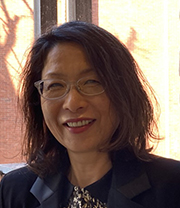
Professor of Translation and Interpreting Studies at Rikkyo University, Tokyo
Read more
Kayoko Takeda is a professor of translation and interpreting studies at Rikkyo University in Tokyo. She is the author of Interpreting the Tokyo War Crimes Trial (University of Ottawa Press) and Interpreters and War Crimes (Routledge).
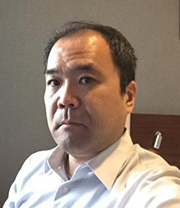
Professor of History and Asian American Studies at the University of Pennsylvania
Read more
Eiichiro Azuma is Professor of History and Asian American Studies at the University of Pennsylvania and a Hoover Visiting Fellow. He specializes in Asian American history with an emphasis on Japanese Americans and transpacific migration, as well as U.S. and Japanese colonialisms and U.S.-Japan relations. He holds a M.A. in Asian American Studies (1992) and a Ph.D. in history (2000), both from University of California at Los Angeles. He has taught at Penn since January 2001. Since Fall 2009, Azuma has held the Alan Charles Kors Endowed Term Chair in History. He is the author of In Search of Our Frontier: Japanese America and Settler Colonialism in the Construction of Japan’s Borderless Empire (University of California Press, 2019) and Between Two Empires: Race, History, and Transnationalism in Japanese America (Oxford University Press, 2005).

Propaganda Leaflets against the Japanese by the Allies: Insights, Revelations, and Japanese American Contributors
01.27. 2022Propaganda Leaflets against the Japanese by the Allies: Insights, Revelations, and Japanese American Contributors
In the Pacific War, more than 100 million copies of propaganda leaflets against Japan were made and distributed by the Allied powers. The American, Australian, British and Chinese armies all mobilized people with knowledge of the Japanese language and culture to promote propaganda against the enemy in their respective war theater. A diverse group of people, including Westerners born and raised in Japan and in particular, Japanese Americans, were involved in making propaganda leaflets and played a part in the psychological warfare. The propaganda deployed there was not to demean and condemn the enemy and stir up enmity against Japan, but to try to persuade the enemy, the Japanese, to surrender and turn to peace by revealing the truth. Speaker: Reiko Tsuchiya. Moderator: Kaoru (Kay) Ueda
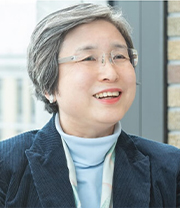
Professor, Faculty of Political Science and Economics, Waseda University
Read more
Professor Reiko Tsuchiya has her Ph.D in Sociology from Hitotsubashi University, Japan, and has been a professor of sociology and media history in the Faculty of Political Science and Economics at Waseda University since 2010. She serves as Director of the 20th Century Media Institute and Editor-in-Chief of the history journal Intelligence. Previously, she has been a visiting scholar at the University of Maryland (2003) and the London School of Economics and Political Science (2017), as well as a visiting professor at Cairo University in Egypt (2018) and the Communication University of China (2013-2015). She has numerous publications, including Chronology of Japanese Media History (ed., 2018), The Pacific War Read from Propaganda Leaflets against the Japanese (2010), and The Origin of Popular Newspapers in Japan (2002). She also created the Database of Wartime Propaganda Leaflets at https://www.waseda.jp/prj-bira/

Curator of the Japanese Diaspora Collection at the Hoover Institution Library & Archives

Kaoru (Kay) Ueda is the curator of the Japanese Diaspora Collection at the Hoover Institution Library & Archives. She curated many of the materials used in Fanning the Flames: Propaganda in Modern Japan (Hoover Institution Press, 2021) and forthcoming exhibition. Ueda manages the Japanese Diaspora Initiative, endowed by an anonymous gift to promote the study of overseas Japanese history during the Empire of Japan period. She is also the editor of On a Collision Course: The Dawn of Japanese Migration in the Nineteenth Century (Hoover Institution Press, 2020).
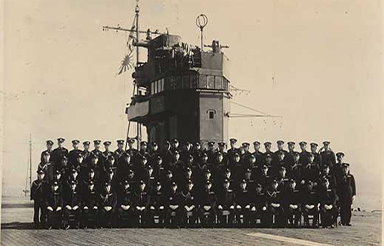
Historiography of the Pacific War: Past Accomplishments and Future Challenges
12.7. 2021Historiography of the Pacific War: Past Accomplishments and Future Challenges
On the occasion of the 80th anniversary of Pearl Harbor, the Hoover Institution Library & Archives is pleased to host a panel of leading military historians of the Pacific War. This panel takes a fresh look at research trends and accomplishments in the past eight decades and discusses new challenges and missions for the next generation of students and researchers of World War II in Asia and the Pacific. This event also marks Hoover's recent acquisition of the Mitsuo Fuchida Papers, generously gifted by his family. Captain Fuchida, the lead bomber aviator in the first wave of the Pearl Harbor attack, also gained new prominence in the postwar period due, among other things, to the publication of Midway: The Battle that Doomed Japan, the Japanese Navy's Story (1955), a highly influential account of the Battle of Midway albeit with its strengths and flaws. Taking Fuchidaʻs controversial legacy as the point of departure, this panel reflects upon the complex process of the trans-Pacific knowledge production and transfer concerning the Pacific War in the past eight decades and considers the future directions in researching World War II in Asia and the Pacific.

Professor in the GW Department of History, Columbian College of Arts and Sciences
Read more
Talk Title: “Two Events and an Iconic Image”: Remembering, Forgetting, and Reimagining the Asia-Pacific War at Eighty
This paper examines the ways in which the Asia–Pacific War has been remembered,forgotten and reimagined by historians, storytellers, and the public in the United States after eighty years of history writing, consumer art, and popular memory. It argues that, in the United States, as living memory of the conflict becomes rare, popular images and understanding of the war have become weirdly truncated. On the other hand, academic understanding of the war has significantly broadened and includes work that examines the familiar and unfamiliar aspects of the conflict from a variety of national perspectives. At the same time many other countries of the Pacific rim, where the war was for long regarded as a painful, destructive, and sometimes embarrassing experience to be best forgotten, have more recently come to view their nation’s war years as bearing an important relationship to contemporary political, social, or cultural issues.
RONALD SPECTOR (Ph.D, Yale) is Emeritus Professor of History and International Relations in the Elliott School of International Affairs, George Washington University. During his thirty years in the Elliott School he taught undergraduate and graduate courses with emphasis on twentieth century military developments and confrontations. He previously taught at the University of Alabama and at LSU and served as Director of Naval History in the U.S. Department of Defense.
Beside his recent book, In the Ruins of Empire: The Japanese Surrender and the Battle for Postwar Asia, he is the author of five other works. His best known books are Eagle Against the Sun: The American War With Japan, which was a main selection of the Book of the Month Club and winner of the Theodore and Franklin Roosevelt Prize in Naval History, and After Tet: The Bloodiest Year in Vietnam. His book, At War at Sea: Sailors and Naval Combat in the Twentieth Century received the 2002 Distinguished Book Award of the Society for Military History. His work has also appeared in French, Hungarian, Japanese, and Vietnamese editions.
Spector has been a Fulbright Lecturer in India, Israel and Singapore, “Class of 1957 Distinguished Visiting Professor of Naval History” at The U.S. Naval Academy, Annapolis, Visiting Professor of Strategy at The National War College, and Harold K. Johnson Visiting Professor of Military History at the U.S. Army War College. He was also Distinguished Guest Professor at Keio University in Tokyo, visiting professor at Ritsumeikan University in Kyoto, and visiting professor at Princeton. In 2012, he received the Samuel Eliot Morison Prize of the Society for Military History awarded for career achievement in that field.
A Lieutenant Colonel (Ret.) in the Marine Corps Reserve, Spector served on active duty in Vietnam, 1968-1969, during the 1982-1983 Lebanon-Grenada operations and during the Gulf War. He is a graduate of the Expeditionary Warfare School at Quantico and served two tours on the Adjunct Faculty of the U.S. Marine Corps Command and Staff College.

Adjunct lecturer for the U.S. Naval War College
Read more
Talk Title: My Life With Fuchida: Modern Pacific War Historiography and the Quest for Source Diversity
JONATHAN PARSHALL is co-author (with Anthony Tully) of Shattered Sword: The Untold Story of the Battle of Midway. He is a lecturer for the U.S. Naval War College, and a frequent speaker for the Pearl Harbor Aviation Museum, National WWII Museum, the National Museum of the Pacific War, and others. He has been widely published in numerous historical journals and magazines, including the U.S. Naval War College Review, Naval History magazine, Naval Institute Proceedings, WWII magazine, Wartime (the magazine of the Australian War Memorial), The Northern Mariner, and others. Parshall has appeared on NetFlix, the BBC, the Smithsonian Channel, National Geographic Channel, Discovery Channel, History Channel, and the BBC. He is currently working on his second book, a history of the year 1942.

Military historian, lawyer, and U.S. Army veteran
Read more
Talk Title: Rags to Itches: The Historiography of the Asia Pacific War
Richard B. Frank is an internationally renowned expert on the Pacific war. After graduating from the University of Missouri, he was commissioned in the US Army, in which he served for nearly four years, including a tour of duty in the Republic of Vietnam as an aero rifle platoon leader with the 101st Airborne Division. Frank completed studies at Georgetown University Law Center in Washington, DC, and is the author of Downfall: The End of the Imperial Japanese Empire (Random House, 1999), which received the Harry S. Truman Book Award. He recently published, Tower of Skulls: A History of the Asia–Pacific War, Volume I: July 1937–May 1942 (W. W. Norton, Incorporated, 2021).
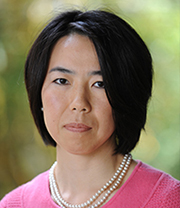
Professor of Modern Japan, University of Hawaiʻi at Mānoa
Read more
MODERATOR
YUMA TOTANI is a historian of modern Japan and a researcher of post-WWII Allied war crimes trials in the Asia-Pacific region. She is a co-founder of the War Crimes Documentation Initiative (WCDI) at the University of Hawaiʻi at Mānoa, a digital humanities laboratory that develops innovative digital tools for promoting the teaching and research of WWII-era war crimes in the Asia-Pacific region. Her publications include The Tokyo War Crimes Trial: The Pursuit of Justice in the Wake of World War II (Harvard University Asia Center, 2008), Justice in Asia and the Pacific Region, 1945-1952: Allied War Crimes Prosecutions (Cambridge University Press, 2015), and The Tokyo War Crimes Tribunal: Law, History, and Jurisprudence (co-authored with David Cohen; Cambridge University Press, 2018). Her career mission is to undertake a series of multi-year research and book publications that help illuminate the conditions, circumstances, and consequences of Japanese war and war crimes, and assessing the implications of our historical knowledge of WWII for strengthening the principles of international justice, accountability, and the rule of law in the twenty-first century.

Holding the Sword of Damocles: Japan in Russian and Soviet Popular Images, 1904-1945
11.5. 2021Holding the Sword of Damocles: Japan in Russian and Soviet Popular Images, 1904-1945
On January 11, 1934, the Soviet newspaper Izvestiia (News), published a political caricature entitled “The Sword of Damocles.” Drawn by the paper’s chief political caricaturist, Boris Efimov, the image is dramatic: a ghost-like samurai clenching a sword labeled voina (war) looms over the crib of the 1934 New Year’s baby. Just over three years later, the same paper published a caricature by the same artist. “A Little Beast with a Huge Appetite” features a Japanese officer--who bears a resemblance to Emperor Hirohito--clutching at the globe with bloody, beast-like hands.These images appeared at a time when Soviet media outlets increasingly warned against the perceived peril posed by Japan in the 1930s. The two images referenced above perfectly capture the dominant themes in Soviet popular depictions of Japan and the Japanese, characterizations that tapped into visual stereotypes that had first appeared during the Russo-Japanese War of 1904-5. Japan and the Japanese were both threatening and weak, wielders of a perilous sword of Damocles, and little beasts all at once. This lecture will examine these seemingly contradictory depictions of Japan in Soviet culture and explore their roots in the early 20th century and the racial stereotypes that grew significantly after the Russo-Japanese War. Soviet propaganda continued to fan its own flames about Japan, in other words, and further spread pernicious perceptions first imagined in Imperial Russian propaganda.

Walter E. Havighurst Professor of History and Director, Havighurst Center for Russian and Post-Soviet Studies, Miami University
Read more
Stephen M. Norris is the Walter E. Havighurst Professor of Russian History and the Director of the Havighurst Center for Russian and Post-Soviet Studies at Miami University. Norris’s research focuses on modern Russian history with an emphasis on visual culture and propaganda since the 19th Century. He is the author of, A War of Images: Russian Popular Prints, Wartime Culture, and National Identity, 1812-1945 (Northern Illinois University Press, 2006), and Blockbuster History in the New Russia: Movies, Memory, Patriotism (Indiana University Press, 2012).
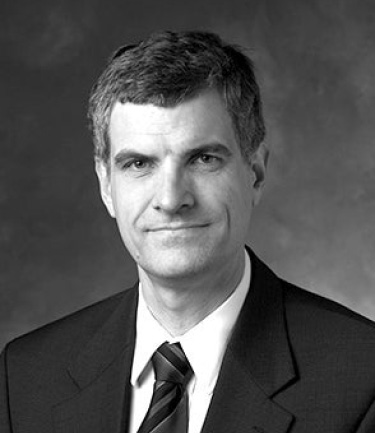
Robert Conquest Curator for Russia and Eurasia, Hoover Institution Library & Archives
Read more
Anatol Shmelev is a research fellow at the Hoover Institution, Robert Conquest Curator of the Russia and Eurasia Collection at Hoover’s Library & Archives, and the project archivist for its Radio Free Europe/Radio Liberty Collection. Shmelev’s expertise is in twentieth-century Russian history, specializing in the Russian Civil War. As curator, he is principally responsible for acquiring archival materials relating to Russia, the Soviet Union, and the independent states that emerged from the USSR after 1991.

A Visual Revolution: The Emperor in Popular Prints
10.5. 2021A Visual Revolution: The Emperor in Popular Prints
The popularization of images of the reigning emperor of Japan was one among many radical changes of the Meiji period. But it was not a simple matter of indiscriminately showing his face and form in commercial prints. This talk investigates the various ways that the emperor became visible and legible, by considering Japanese and foreign conventions of portraiture and visual representation. It also considers the effects and limitations of the new visibility. This event also celebrates the launch of the Fanning the Flames: Propaganda in Modern Japan website and online exhibition.

Alice Y. Tseng is the department chair of History of Art and Architecture at Boston University.
Read more
Alice Y. Tseng is the department chair of History of Art and Architecture at Boston University. Her research focuses on Japan from the nineteenth century to the present, especially the history of cities, buildings, and the visual arts in response to exchanges with Europe and the United States. Other areas of interest are histories of collections and exhibitions, and the visual and spatial representations of Japan’s modern monarchy. Tseng is the author of The Imperial Museums of Meiji Japan: Architecture and the Art of the Nation (Seattle: University of Washington Press, 2008), Kyoto Visual Culture in the Early Edo and Meiji Periods: The Arts of Reinvention, coedited with M. Pitelka (Abingdon, UK: Routledge, 2016), and Modern Kyoto: Building for Ceremony and Commemoration, 1868–1940 (Honolulu: University of Hawai‘i Press, 2018). Her research has appeared in major disciplinary journals, including the Journal of the Society of Architectural Historians, the Art Bulletin, the Review of Japanese Culture and Society, and the Journal of Japanese Studies.

Bowman Family Professor of History, Stanford University
Read more
Matthew Sommer is the Bowman Family professor of History at Stanford University. He is a social and legal historian of China in the Qing dynasty (1644-1912) whose research focuses on gender, sexuality, and family. He is the author of Sex, Law, and Society in Late Imperial China (Stanford University Press, 2000) and Polyandry an Wife-Selling in Qing Dynasty China: Survival Strategies and Judicial Interventions (University of California Press, 2015).
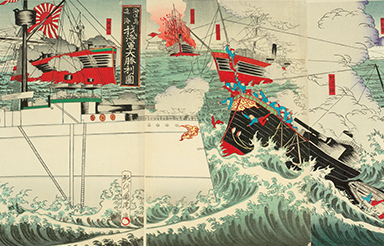
Anchors of History: The Long Shadow of Japanese Imperial Propaganda
06.1. 2021Anchors of History: The Long Shadow of Japanese Imperial Propaganda
Barak Kushner considers war booty collected by the Japanese military navy taken from the Qing Empire at the end of the First Sino-Japanese War and displayed for the purpose of state propaganda. Half a century later much of this material was repatriated to China and is now poised in a revolutionary military museum in central Beijing. A discussion with Michael Auslin about the relics of war follows Kushner’s lecture.

Barak Kushner is professor of East Asian history and the chair of Japanese Studies in the Faculty of Asian and Middle Eastern Studies at the University of Cambridge.
Read more
Barak Kushner is professor of East Asian history and the chair of Japanese Studies in the Faculty of Asian and Middle Eastern Studies at the University of Cambridge. He has edited numerous books and written several monographs, including the award winning Men to Devils, Devils to Men: Japanese War Crimes and Chinese Justice (Cambridge, MA: Harvard University Press, 2015). In 2020 he hosted several episodes of a major Chinese documentary on Japanese war crimes and is currently writing a book titled The Construction of Injustice in East Asia: Japan versus Its Neighbors. Kushner was a visiting fellow at the Swedish Collegium for Advanced Study, 2019–20, and a visiting professor at Waseda University in Tokyo. He is also a guest professor at Shanghai Jiao Tong University. He received the fifteenth Nakasone Yasuhiro Award for Excellence in 2019. His research projects have received funding from the Chiang Ching-kuo Foundation, the Toshiba Foundation, and the European Research Council. Abridged Barak Kushner is professor of East Asian history and the chair of Japanese Studies in the Faculty of Asian and Middle Eastern Studies at the University of Cambridge. He has edited numerous books and written several monographs, including the award winning Men to Devils, Devils to Men: Japanese War Crimes and Chinese Justice (2015). In 2020 he hosted several episodes of a major Chinese documentary on Japanese war crimes and is currently writing a book titled The Construction of Injustice in East Asia: Japan versus Its Neighbors. He received the fifteenth Nakasone Yasuhiro Award for Excellence in 2019. His research projects have received funding from the Chiang Ching-kuo Foundation, the Toshiba Foundation, and the European Research Council.
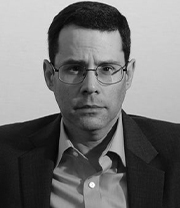
Michael R. Auslin is the Payson J. Treat Distinguished Research Fellow in Contemporary Asia at the Hoover Institution, Stanford University.
Read more
Michael R. Auslin is the Payson J. Treat Distinguished Research Fellow in Contemporary Asia at the Hoover Institution, Stanford University. A historian by training, he specializes in US policy in Asia and geopolitical issues in the Indo-Pacific region. His publications include Negotiating with Imperialism: The Unequal Treaties and the Culture of Japanese Diplomacy (Cambridge, MA: Harvard University Press, 2004) and Asia’s New Geopolitics: Essays on Reshaping the Indo-Pacific (Stanford, CA: Hoover Institution Press, 2020). Auslin was an associate professor of history at Yale University, a resident scholar at the American Enterprise Institute, and a visiting professor at the University of Tokyo. He is a fellow of the Royal Historical Society, the senior adviser for Asia at the Halifax International Security Forum, and a senior fellow at the Foreign Policy Research Institute. He has been named a Young Global Leader by the World Economic Forum, a Fulbright scholar, and a Marshall Memorial Fellow by the German Marshall Fund, among other honors. Abridged: Michael R. Auslin is the Payson J. Treat Distinguished Research Fellow in Contemporary Asia at the Hoover Institution, Stanford University. A historian by training, he specializes in US policy in Asia and geopolitical issues in the Indo-Pacific region. His publications include Negotiating with Imperialism: The Unequal Treaties and the Culture of Japanese Diplomacy (2004) and Asia’s New Geopolitics: Essays on Reshaping the Indo-Pacific (2020). He is a fellow of the Royal Historical Society, the senior adviser for Asia at the Halifax International Security Forum, and a senior fellow at the Foreign Policy Research Institute. He has been named a Young Global Leader by the World Economic Forum, a Fulbright scholar, and a Marshall Memorial Fellow by the German Marshall Fund.
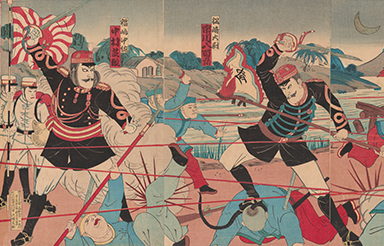
“War Fever” as Fueled by the Media and Popular Culture: The Path Taken by Meiji Japan's Policies of “Enrich the Country” and “Strengthen the Armed Forces”
06.10. 2021“War Fever” as Fueled by the Media and Popular Culture: The Path Taken by Meiji Japan's Policies of “Enrich the Country” and “Strengthen the Armed Forces”
Professor Toshihiko Kishi discusses Japan and East Asia more than 100 years ago, and the relationship between power, media, and popular culture. In the 1890s, the Meiji government of Japan started on the path of modernization and proceeded to invade the Korean Peninsula, China, and Taiwan. The "war fever" fanned by the government was closely related to the emerging technologies of publishing and printing. Following Kishi’s presentation, Kay Ueda moderates questions from the audience.
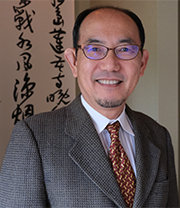
Toshihiko Kishi is a professor at the Center for Southeast Asian Studies, Kyoto University.
Read more
Toshihiko Kishi is a professor at the Center for Southeast Asian Studies, Kyoto University. His research covers 20th-century Asian history, East Asian regional studies, and media studies. He is the author of Visual Media in Manchukuo: Posters, Postcards and Stamps (2010), East Asian Popular Songs Hour: Crossing Boundaries and Crossing Musicians (2013), and The Postwar History of Sino-Japanese Submarine Cables: Normalization of Diplomatic Relations and the Rebirth of Communications (2015), and is the coeditor of Enlightening through TV: USCAR Public Diplomacy, 1950–1972 (2020). Professor Kishi is also a member of the Science Council of Japan and a senior researcher at the Research Center for Science Systems, Japan Society for the Promotion of Science.

Curator of the Japanese Diaspora Collection at the Hoover Institution Library & Archives

Kaoru (Kay) Ueda is the curator of the Japanese Diaspora Collection at the Hoover Institution Library & Archives. She curated many of the materials used in Fanning the Flames: Propaganda in Modern Japan (Hoover Institution Press, 2021) and forthcoming exhibition. Ueda manages the Japanese Diaspora Initiative, endowed by an anonymous gift to promote the study of overseas Japanese history during the Empire of Japan period. She is also the editor of On a Collision Course: The Dawn of Japanese Migration in the Nineteenth Century (Hoover Institution Press, 2020).

Kamishibai (paper plays) & the Mobilization of Women in Wartime Japan
08.26. 2021Kamishibai (paper plays) & the Mobilization of Women in Wartime Japan
Women were crucial to Japan’s war effort from 1937, when the China War started, until 1945 when WWII ended. Whether organizing neighborhood meetings, laboring in factories, or just trying to feed their families under conditions of increasing food shortages, women had important roles to play in sustaining the war. Kamishibai (paper plays) were a propaganda medium considered especially appropriate for the mobilization of women. This presentation explores the implicit and explicit messages to women in wartime kamishibai.

Head of Asian Studies Department and Professor of Modern Japanese Literature and Popular Culture, University of British Columbia
Read more
Sharalyn Orbaugh specializes in modern Japanese literature and popular culture and teaches undergraduate and graduate courses at the University of British Columbia where she also serves as head of the Asian Studies department. She is the author of Japanese Fiction of the Allied Occupation (Brill, 2007) and Propaganda Performed: Kamishibai in Japan’s Fifteen Year War (Brill, 2015) and editor of a forthcoming reference work, The Columbia Companion to Modern Japanese Literature. She received her PhD in Far Eastern Languages and Literatures from the University of Michigan, and spent six years at UC Berkeley before joining UBC in 1997.

Curator of the Japanese Diaspora Collection at the Hoover Institution Library & Archives

Kaoru (Kay) Ueda is the curator of the Japanese Diaspora Collection at the Hoover Institution Library & Archives. She curated many of the materials used in Fanning the Flames: Propaganda in Modern Japan (Hoover Institution Press, 2021) and forthcoming exhibition. Ueda manages the Japanese Diaspora Initiative, endowed by an anonymous gift to promote the study of overseas Japanese history during the Empire of Japan period. She is also the editor of On a Collision Course: The Dawn of Japanese Migration in the Nineteenth Century (Hoover Institution Press, 2020).

